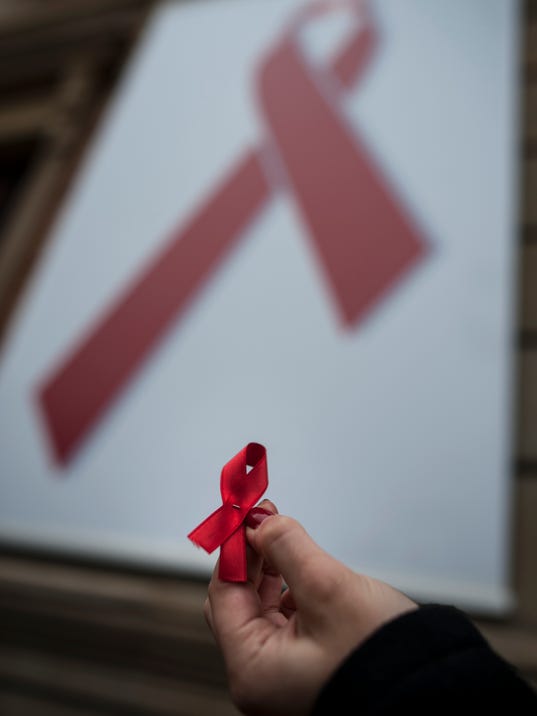The final project of my campaign, titled #wipeoutthestigma in an effort to help educate individuals on the reality of living with HIV/AIDS today and wipe out the stigma and discrimination that comes along with it, concludes with a print/digital facet.
By combining an old media approach (print) with new media (digital, social media), an expanded audience can be reached.
The purpose of these "ads" is to catch a person's attention quickly with cheeky images and cause them to see the fact at the bottom. Maybe it's a way to get someone to think, maybe it's just clever art. In today's over-connected world, one really has limited time to get the message across.
In the end, my passion for the issue of HIV/AIDS awareness and art combined to create a new campaign!
A blog dedicated to the fight against the stigma, discrimination, and criminalization of HIV/AIDS
Tuesday, December 2, 2014
Monday, December 1, 2014
World AIDS Day: 7 facts about the disease*
USA Today Network Lori Grisham, USA TODAY Network
It's World AIDS Day, a day started in 1988 to raise awareness about HIV and AIDS and work to end the epidemic.
HIV, or Human Immunodeficiency Virus, is a virus that attacks the body's immune system. HIV can progress into AIDS, the final state of the infection when the body is unable to fight disease or infection.
Here are seven facts about where things stand today:
 1. An estimated 34 million people have HIV/AIDS worldwide. In the USA, an estimated 1.2 million people live with HIV and one out of every seven are not aware they have the virus, according to the Centers for Disease Control and Prevention.
1. An estimated 34 million people have HIV/AIDS worldwide. In the USA, an estimated 1.2 million people live with HIV and one out of every seven are not aware they have the virus, according to the Centers for Disease Control and Prevention.2. Sub-Saharan Africa has the most people living with HIV in the world and 70% of all new HIV infections occur there. In 2013, there were an estimated 24.7 million cases in the region, according to the World Health Organization.
3. In the USA, the number of new HIV infections reported have decreased from approximately 130,000 a year to 50,000 a year since the height of the AIDS epidemic in the 1980s, according to the CDC.
4. There is no cure for HIV, but antiretroviral drugs (ART) have helped people live longer with the virus. In 2013, 12.9 million people received the drug therapy, according to the World Health Organization.
5. From 2005 to 2013, AIDS-related deaths globally have decreased by almost 40% across age groups. However, deaths for children ages 10 to 19 have not decreased, according to UNICEF.
6. In the USA, HIV primarily occurs in urban areas with a population of 500,000 people or more. Hardest hit areas in 2012 included Atlanta, Miami, Baton Rouge, La., New Orleans, Memphis and Baltimore, according to the CDC.
7. The group most affected by HIV in the USA remains gay or bisexual men. Male-to-male sex accounted for 63% of new HIV infections in 2010, according to the CDC. The CDC reports that African Americans are disproportionately affected. In 2010, they made up 14% of the U.S. population, but accounted for 44% of new HIV infections.
*This article originally appeared in SC Times, Dec. 1, 2014 and can be found here.
Subscribe to:
Comments (Atom)




